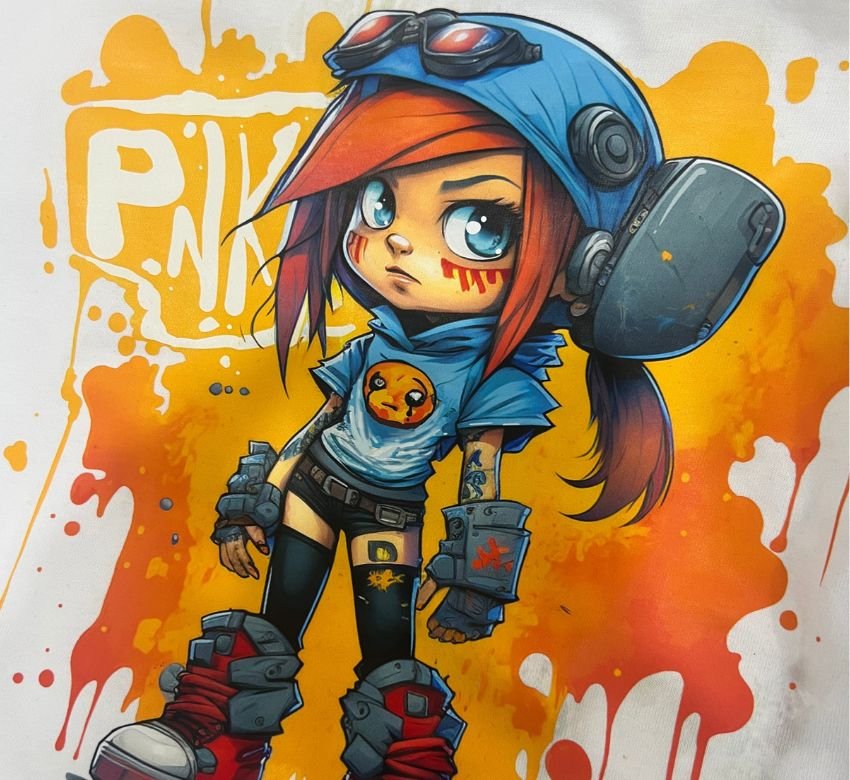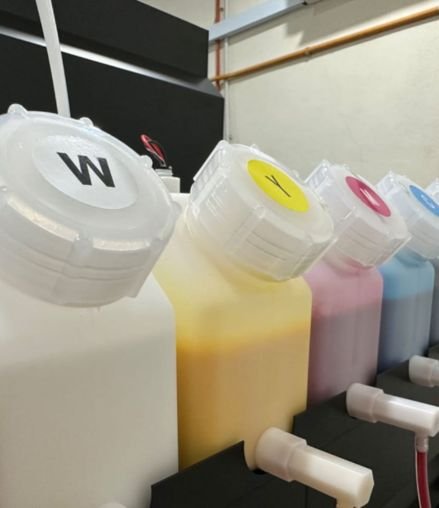- 32 & 32A, Lorong Pala 5, Kawasan Industri Ringan Permatang Tinggi, 14100 Simpang Ampat, Penang, Malaysia
- nick@koyi.my

DTF (Direct-To-Film) Printing Is Revolutionizing The Industry Of Garment Printing Due To Its Extremely Flexible And Vibrant Output. It Is Extremely Suitable For Custom Apparel Printing In Malaysia. This Cutting-Edge Method Provides A Versatile And Efficient Way To Bring Any Form Of Intricate Designs To Life On Various Fabrics Merchandises, Offering A New Way To Personalized Garment Production.

Digital Transfer is extremely suitable for custom design as it can handle digitally generated image, especially in the Era where AI is so conveniently available for end-users to generate their dream images. People can now easily generate design from AI image generator such as Midjourney and OpenAI's Dall-E 3 and directly submit their design to Custom Design Tshirt Provider like Koyin Malaysia. Koyin Malaysia allows customer to directly design their favourite merchandise and place order directly after that. This cutting-edge innovative process eliminated the traditional way of ordering t-shirt which normal require MOQ, and the multiple layer of supply chains, making the entire ordering process cut down to only two parties involved: directly from the manufacturer straight to the consumers.
Good professional DTF printer customize their own formula of pairing raw materials and fabric to find the perfect match. There is a saying on the DTF community that “Not All DTF Are The Same”. This is why finding a good reliable DTF printer in Malaysia and Singapore is so important. The whole process of DTF printing involves 3 raw materials:
- The artworks received need to be properly prep before submitting to print by a DTF Printer. - The process includes creating a printable graphic, applying white channel, and photo-ripping.
- Begin by digitally printing the design onto a special coated release film. - Ensure high-quality, full-color prints to capture intricate details and nuances. QC is necessary in this stage to avoid any mistake or quality issue.
- Apply a thin layer of heat-activated adhesive to the film, normally Polyurethane-based, ensuring it fully covered the printed area on the film.
- The printed film is then transferred to the oven to activate the adhesive with heat. - Proper temperature and time control is essential at this stage as under-cured or over-cured film can result in bad printing quality as well.
- Utilize a high pressure heat press to transfer the design from the film to the fabric. - The heat activates the adhesive, ensuring a seamless and perfect bond between the prints and the garment. - Pressure is the key to a properly pressed garment. Ensure your printer is equipped with industrial standard heat press machine for a better quality print. - Depending on the fabric material, some materials often trap more moisture and a pre-press would be required for the case.
- Double press the printed design to properly cure the printed garment, and set the ink and adhesive permanently. - This step ensures the adhesive and coated and properly set into the garment, ensuring its color retention and durability, even after multiple washes.
KOYIN MALAYSIA is a professional custom design printer providing custom printed T-shirt, corporate uniform, tote bag, cap, and many other merchandise to its customers in Malaysia and Singapore. You can easily design with their online designer tools and place order directly on their website, and the printed merchandise would be shipped directly from the manufacturer straight to your doorstep.





